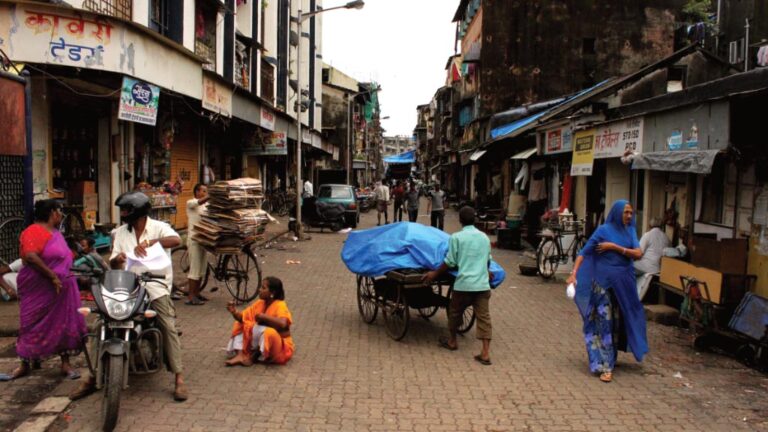In India, addressing sex trafficking remains a challenge. A study from 2013 found that four in five female sex workers in the country have been trafficked and forced into the industry. But what happens afterwards? What are the challenges for organisations that try to support sex workers who have been trafficked? Olga González, who has recently worked in one of Asia’s largest and oldest red light areas in Mumbai, answered our questions.
India is a source, destination and transit country for women who are victims of sex trafficking. Of the estimated 20 million commercial sex workers in India, 16 million women are trafficked for the purpose of sexual exploitation, although determining the prevalence of trafficking is difficult given its illegal nature. Olga González has recently concluded a six-months consultancy with Apne Aap Women’s Collective. The anti-trafficking NGO has served several thousand women and children in Kamathipura since its foundation in 1998. Kamathipura is Mumbai’s notorious red light district, one of Asia’s largest and oldest. The organisation seeks to improve the quality of life of sex workers and empower those who have been trafficked into sex houses.
We started off by asking about the path that women in Kamathipura take from their homes into the industry. Mrs. González explained:
– Most of the sex workers come from different states and countries. The majority are from Nepal, Bangladesh and Kolkata [India]. Most of the women I talked to reported having been trafficked or sold by a female relative. It is not like they were taken by force but they go willingly because they are being told “Oh, we are just going to visit Mumbai”. One woman once recounted “My relative said we are going to a fair”. Others came to find a job as a maid or in embroidery but in the end they were being sold to the gharwalis, the brothel owners. Then they have to work for one, two, three years to pay off what the gharwali has paid to the middleman, the dalal. Those women are the most vulnerable. Imagine them arriving in Kamathipura having no support at all.
Mrs. González emphasised the hardship these women go through during that phase including violence, lack of food and forced isolation, in particular when they resist engaging in forced prostitution. However, once they have paid, providing them with alternatives turns out to be a difficult task.
– Suitable teaching methods are important, because women often don’t know how to use a computer, given that the vast majority of them are illiterate. Besides that, making a deeper impact on their livelihoods remains difficult. Even in embroidery, where there are so many companies in India, it’s hard to get a well-paid job. Many of them have worked in other jobs before and the skills that could be learned are not a sufficient motive for them to quit the profession. They earn way more by being a sex worker compared to, for instance, making candles.
While economic incentives keep women in the industry, sex workers have to cope with the stigma attached to their profession. In Kamathipura, they have their own ways of doing that.
– They don’t refer to themselves as sex workers. They identify as didi (Hindi for sister). So when you talk to them or about them you wouldn’t speak of ‘your sex worker friends’. You would say ‘the other didis’ and they would understand that you refer to other women in the profession. If it wasn’t for their work, they would not be able to sustain themselves or their families, but they still detach themselves completely from what they do. Most of them send money to the villages. A lot of them tell you “I’m here until my children finish school” or “…until I will get my daughter married” because they need the money.
The stigma also affects Apne Aap Women’s Collective’s work as an organisation.
– Although Mumbai is a very progressive city, this neighbourhood is stigmatised. When I tell people that I was working there, everybody would say “I haven’t put a foot in that place”. Most people don’t really know it. The social workers are women who went to university. Their families don’t want them to go to the neighbourhood. Often they would go there and try it out for a month or a week but then they quit. It is not only the outsider perception of Kamathipura, but also how the social workers feel there. The project managers don’t last longer than six, eight months, maximum one or two years.
Lastly, we spoke to Mrs. González about the controversial topics of agency and victimisation of sex workers.
– I think that most consider them either as victims or as bad women who don’t deserve protection. I think the victim approach is less harmful than this portrayal of them as ‘bad’ women. Still, you would rarely find anyone speaking about them as agents who are trying to make a living.
In that context Mrs. González also told us about other organisations that do promote more progressive views.
– In one of the biggest sex workers’ unions, DMSC [Durbar Mahila Samanwaya Collective = Unstoppable Women’s Synthesis Committee] you would find a discourse where they are viewed as agents rather than painting a black-and-white picture as other perspectives often do.
Mrs. Gonzáles concludes:
– Every sex worker has a different story, a different motivation and different reasons for being in the profession. It is a very complex reality but they always remain agents regardless of their circumstances. The fact that many of them decide to stay in the industry as an opportunity to make a living is a fundamental demonstration of that.
Such perspectives are clearly lacking from public discourses in India. A new trafficking law that was passed last year criminalises sex workers adding further difficulty to their situation. A more progressive legal framework which delineates the difference between trafficking and sex work and the work of unions and organisations such as Apne Aap Women’s collective are important steps to safeguard these women’s human rights. At the same time, addressing the root causes of sex trafficking, such as the economic vulnerability of rural areas, is urgently needed.


